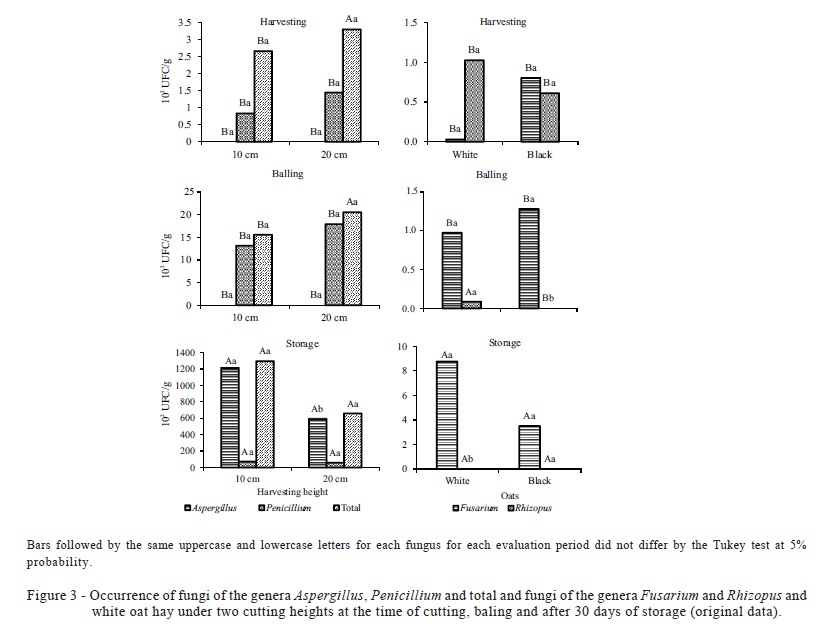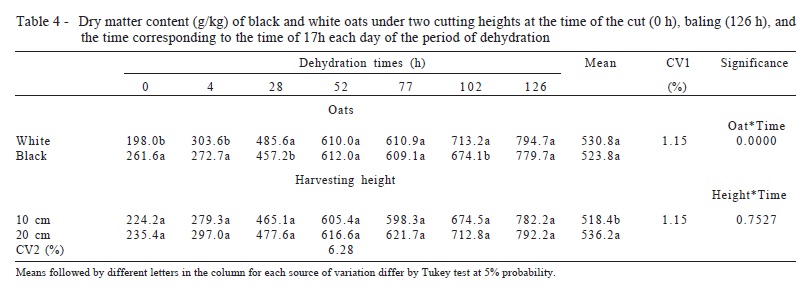The study was conducted to estimate the dehydration curves, chemical composition, and occurrence of fungi in white oat hay (Avena sativa L. cv. Guapa BRS) and black oat hay (Avena strigosa Schreb cv. Common) at two cutting heights. Dehydration curves were studied under a randomized block design with a 2 × 2 factorial arrangement using split plots in time, considering two types of oats (white and black), two cutting heights (10 and 20 cm), and 17 sampling times (0, 4, 19, 24, 28, 43, 47, 52, 67, 71, 76, 91, 95, 100, 115, 129, and 124 hours after harvesting) with five replicates. For the chemical composition and occurrence of fungi, the experimental design comprised randomized blocks in a factorial 2 × 2 split-plot in time with two types of oats, two cutting heights, and three assessment periods: before cutting, during baling, and after 30 days of storage, with five replicates. The hay obtained by cutting of the black and white oats at heights of 10 and 20 cm showed similar dehydration curves. The crude protein values were higher in white oats only at the time of cutting (141.5 g/kg). The black oats showed lower nutritional quality, with higher levels of ADF and lignin. There was no effect of cutting height on the chemical composition, but the cutting height interfered with the production of dry matter and residue after cutting, with cutting at 10 cm leading to higher dry matter production and at 20 cm to increased waste production. The cutting heights of the oats interfere directly with the dry matter production and post-harvest residue without changing the chemical composition of the hay.
Avena spp; crude protein; dehydration curves; storage fungi; straw









